With the recent passing of former Mets catcher Ron Hodges I did a mental exercise trying to recall everything I could remember about Hodges and his playing career with the Amazins. I can remember when he came up as a rookie in 1973. He had a sweet left-handed swing and was a solid defensive catcher. He played like a veteran from his first year onward and his manager Yogi Berra, liked to employ him as a lefty pinch-hitter. Hodges enjoyed 12 consecutive seasons as the Mets backup catcher from 1973 to 1984, and he was one of the best at his job.
This caused me to start thinking of the best Mets back-up catchers in their history and many fabulous players began to scroll across my memory. A lot of these guys are fading from the collective Mets fan memory database so I thought I would throw together this piece on The Top 10 Best Mets Backup Catchers. These players are listed in roughly chronological order and although many of them went on to have long major league careers, this list is for their contributions made during their years as Mets players.
First up: A homegrown Mets World Series winner from 1969.
Duffy Dyer
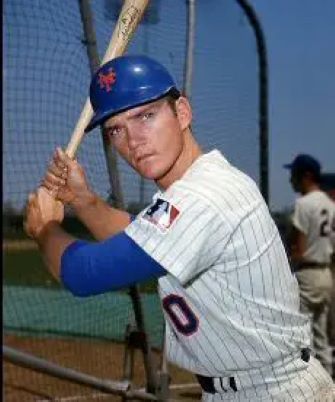
Duffy Dyer – Important homegrown bench player.
The Mets drafted Dyer out of Arizona State University in the 1st Round (9th overall) of the June second phase of the second-ever MLB Amateur Draft of 1966. After spending his first season of professional ball in the minors he got a call-up in 1967 and even played in 43 games for the Mets that year. But the presence of veteran back-up catcher J.C. Martin who joined the Mets in 1968, kept Dyer in the minors until 1969 when he, Martin, and starter Jerry Grote helped the Miracle Mets win their first World Series Championship. Although he only got 79 plate appearances that season, it started a run for Dyer as backup catcher for the Mets through the 1974 season, mostly as a caddie for Jerry Grote.
His best season with the Amazins came in 1972 when he amassed 363 plate appearances, batting .231 with 8 dingers and 36 RBIs. Always an excellent fielder during his 14-year major league career, Dyer had a lifetime .993 fielding percentage and a 36% lifetime caught-stealing percentage. He was traded to the Pittsburgh Pirates after the 1974 season for outfielder Gene Clines and retired from baseball after the 1980 season.
Ron Hodges
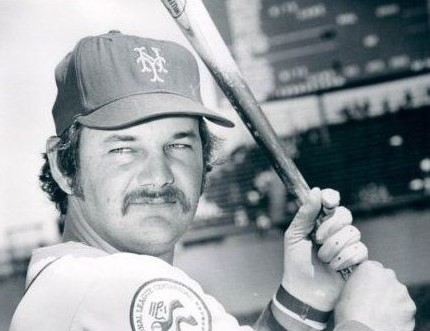
Ron Hodges- One of the two longest-tenured catchers in Mets history.
If I asked you what catcher played for the Mets for the most seasons during his career, you would be right if you said Jerry Grote (12 seasons). But you would be right if you said Ron Hodges who also played for the Mets for 12 seasons. If you got that one right you are truly a Mets expert!
Hodges was a coveted player coming out of college and was first drafted by the Baltimore Orioles in the 6th round of the 1970 MLB June Amateur Draft from Appalachian State University. He didn’t sign. He was then drafted in the 1st round (15th overall) of the 1971 MLB January Draft by the Kansas City Royals. Again, he didn’t sign. Then the Atlanta Braves chose him in the 1st round (10th overall) of the 1971 MLB June Draft-Secondary Phase. And again, yup you guessed it, he didn’t sign. Enter the New York Mets, who snarfed him up in the 2nd round of the 1972 MLB January Draft-Secondary Phase, and what do they say? Fourth time’s the charm? He signed.
Did the Mets know they were getting themselves a catcher who would spend one season in the minors before locking down the number two catching duties for the next 12 seasons? Who wouldn’t sign up for that? Hodges remained a Met for his entire career and played in 666 games for them. In 1683 plate appearances Hodges slashed .240/.342/.322. He had 342 hits, 56 2B’s, 2 3B’s, 19 homers and 147 RBIs. Defensively he appeared in 445 games and finished his career with a .978 fielding percentage and threw out 31% of would-be base stealers.
Charlie O’Brien
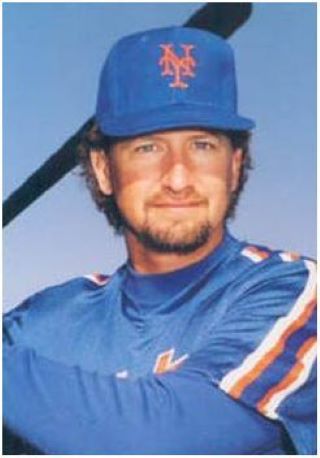
Charlie O’Brien – Valuable defensive backstop.
Charlie O’Brien is arguably one of the best, if not the best defensive catcher the Mets have ever had. He was a game-changer behind the plate which was the reason he enjoyed a 15-year catching career at the big league level despite a .221 lifetime batting average. The Mets had him for four seasons in the prime of his career, ages 30 through 33 and he was absolutely loved and appreciated by the pitchers, the coaching staff and the fans.
He had a quick cup of coffee with Oakland in 1985 at the age of 25 but didn’t break into the ‘bigs’ until 1987 after being traded to Milwaukee. He served as the backup catcher for the Brewers for three and a half seasons before being traded to the Mets during the 1990 season. The Mets acquired O’Brien from the Brew Crew for two players to be named later who turned into righty reliever Julio Machado and a left-hander named Kevin Brown….no, not that Kevin Brown.
Okay, so before I give you his stats remember the part about him being a great defensive player? Know what I’m saying? When I referred to him as a ‘game changer’ I wasn’t talking about his hitting. That said, in 659 plate appearances over his four Met seasons Charlie slashed .212/.289/.309, with 52 Runs, 8 HR’s and 59 RBI’s. But the flip side is what he did defensively during that span. In 232 games as a Met, O’Brien had an average fielding percentage of .989 and a caught-stealing percentage of 38.5.
After the 1993 season, O’Brien became a free agent and signed a two-year contract with Atlanta where he became future Hall of Famer Greg Maddux’s personal catcher. He moved on to Toronto for two seasons and then after that the Chisox, Anaheim and Montreal before calling it quits in 2000.
Todd Pratt
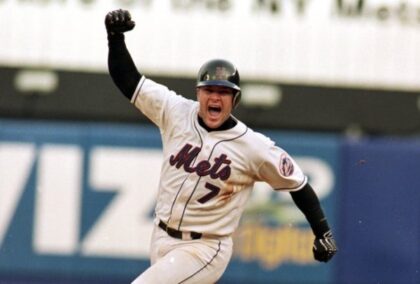
Todd Pratt – AKA: “Tank”
Todd Pratt, affectionately referred to as “Tank” by his teammates and the fans was one of the most popular Mets of all time, that is until he left New York to become a fan favorite in Philadelphia. At that point, Mets fans kind of felt betrayed. After all, Tank seemed to be having entirely too much fun as a Phillie. But considering he hit one of the biggest and most important, clutch home runs in Mets history, I guess we can let that slide.
Tank’s journey to the major leagues was anything but typical. It was more like a never-ending marathon as Pratt toiled in the minor leagues for over a decade from 1985 to 1995, during which time he was part of six different organizations and granted his free agency four different times. He was able to spend parts of four of those seasons in the big leagues, with the Phillies and Cubs earning him 226 major league plate appearances. But things hit rock bottom for our hero during the 1995 season in the Cubs organization and it was so bad that after the season he quit baseball. In 1996 he did not play baseball at all, on any level, and instead taught baseball at a kid’s camp. But in December that year, he was signed to a minor league contract by the Mets as a soon-to-be 30-year-old free-agent journeyman. He then spent the next four and a half seasons (1997 to 2001) as the Mets’ backup catcher to Mike Piazza.
Pratt was a wildly popular player with both his teammates and the fans. He was loose, funny and unpredictable but having languished in the minor leagues for so many years, his appreciation for the game shined through whenever he was in the ballpark. He loved playing baseball. In his five seasons as a Met, he had 640 plate appearances with a slash line of .265/.354/.414 with 78 runs scored, 147 Hits, 30 2B’s, 1 3B, 17 HRs and 87 RBIs. Defensively, Pratt was an excellent fielder with a lifetime fielding percentage of .991 and a caught-stealing rate of 36%.
But there was one swing of the bat he will always be remembered for. On October 9th, 1999, in the Divisional Playoff Series against the Arizona Diamondbacks, Todd Pratt became a Mets hero. With the Mets ahead in the best-of-five series two games to one, Game 4 was crucial for the Mets to win in order to avoid going back to Arizona for a deciding game. Unfortunately, the Mets best player, Mike Piazza, was suffering from a badly swollen thumb and was unable to play. So with Tank starting in place of Piazza the game was tied 3-3 and went into extra innings. With one out in the bottom of the 10th inning, Pratt came to the plate to face Diamondback closer Matt Mantei.
So far in the game, Pratt had gone 0-3 with three ground balls, leaving runners stranded in scoring position each time, but this time would be different. After a curveball in the dirt, Mantei tried to sneak a 1-0 fastball by Pratt but caught too much of the plate and Tank launched a bomb to centerfield. Centerfielder Steve Finley raced to the wall but couldn’t get off a good jump and the ball just alluded his glove and squeaked over the top of the fence. Pratt’s walk-off homer sent the Mets to the National League Championship Series, and although they stalled before getting to the World Series, Pratt’s clutch home run became an iconic highlight in Mets history.
Footnote: I would be remiss if I didn’t include another Todd Pratt highlight which he achieved about a week after his historic homerun. I’m referring of course, to Pratt turning a Robin Ventura walk-off grand slam homerun into a walk-off grand slam single.
Barry Lyons
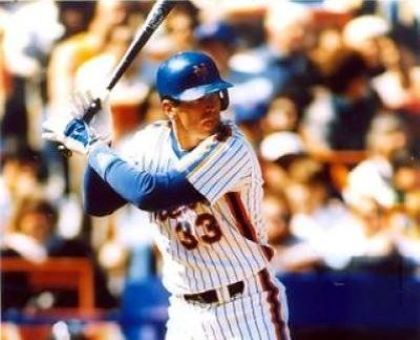
Barry Lyons – Fan Favorite
Lyons was drafted by the Mets in the 15th round of the 1982 MLB June Amateur Draft from Delta State University. He played a total of seven seasons in the ‘bigs’ and spent five of those seasons with the Mets. He first broke in with the 1986 Mets and served as one of the backup catchers to future Hall of Fame backstop Gary Carter, a role he would fill during the time he spent in New York.
In 586 Mets plate appearances, Lyons slashed .240/.277/.341 with 44 Runs, 131 Hits, 24 2B’s, 2 3B’s, 9 HR’s, and 71 RBI’s. Lyons was a decent fielder as a catcher but didn’t exactly strike fear into would-be base stealers. As a Met Barry was only able to throw out a pedestrian 22.4% of base stealers, but his catching fundies were solid as is evidenced by a .980 Met fielding percentage.
Lyons never hit a huge homer for the Mets or dazzled us with his heroics. But not everyone can be Todd Pratt. But hey, like the title of this article says: his role was backup catcher which is normally not a star-studded job. Despite that Barry was well-liked by the fans, and we Mets fans appreciated the calm, professional way Lyons went about his business. The years he spent with the club were years we had a catching back-up who could be relied on to do the job and get you an occasional hit when you needed one. He was released by New York towards the end of the 1990 season.
Alex Trevino
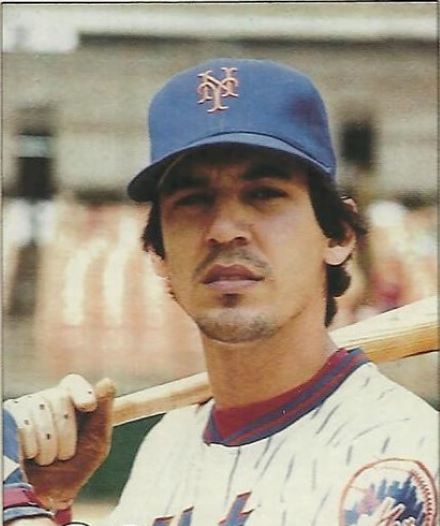
Alex Trevino – Defensive Wiz
Trevino had his contract purchased by the Mets from Cuidad Victoria of the Mexican League in May of 1974, as a 16-year-old International free agent. He spent the next four seasons progressing through the Mets minor league system before breaking into the majors with New York in 1978 as a 20-year-old. He would spend the first four seasons of his 13-year big league career with the Mets before being traded as a 23-year-old as part of the package that brought slugging outfielder George Foster to New York in 1982.
Trevino wasn’t really big for a catcher at 5’10” and 165 lbs, but his athleticism and smooth, fluid control behind the plate made him an awesome defensive backstop. He was a line-drive hitter, and never homered for the Mets but power wasn’t his game, playing the catching position was. In 798 plate appearances for the Mets, Alex slashed .262/.307/.304 with 70 runs, 192 hits, 25 2Bs, 3 3Bs, and 69 RBIs. Watching a catcher with talent like Trevino’s will always be fun for the fans though. As a Met, he threw out 35% of those trying to steal off him while locking down the defensive side with a .979 fielding percentage. Since his playing career ended in 1990, Trevino has enjoyed a long and successful career as a broadcaster for Spanish-speaking television.
Mackey Sasser
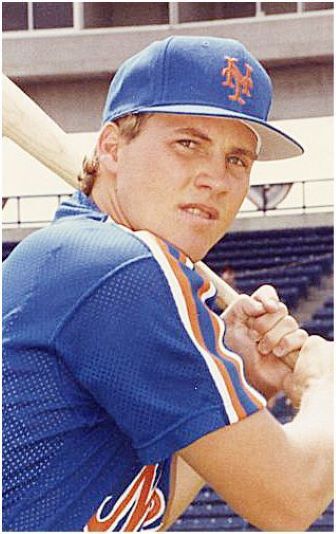
Mackey Sasser – The star that never was.
Now if you like a good mystery, you might want to enjoy a snack or a beverage while reading about this next player. A backup catcher who is one of the more significant enigmas in Mets history. Whether it be a fan or a player, or coach or manager, Sasser would always leave you scratching your head and wondering. You probably have absolutely no idea what I’m talking about right now so let me endeavor to explain.
Mackey Sasser isn’t just the only player in MLB history to have the first name “Mackey” but he could flat-out hit. Sasser was a slasher. A lefty contact hitter with a weird hunched-over batting stance, Sasser was always in motion while in the batter’s box. He’d be swaying back and forth from one foot to the other constantly shifting his weight, and his arms were undulating all over the place. While this was going on he kept doing a bizarre motion with his right hand, taking the middle and index fingers and dragging them across his lips like he was smoking an invisible cigarette. And of course, there was the ‘chaw’. Mackey had so much nervous energy that he was a prime candidate for using chewing tobacco, and he didn’t disappoint, cramming enough of the vile stuff into his mouth to supply an entire village.
But as far as the act of hitting goes, Mackey was the best and baddest of the bad-ball-hitters. Sasser never saw a pitch he didn’t like. For one thing, in 1002 Mets plate appearances over five seasons, Sasser walked just 40 times for a 4.0 BB%, that’s four walks for every 100 plate appearances. At the same time, his strikeout percentage was 7.6%. So you can see he almost always put the ball in play. As a Met, he slashed an impressive .283/.309/.403 with 82 runs, 267 hits, 58 2B’s, 5 3Bs, 15 HRs and 133 RBIs. So then what’s the problem? Why was his big league baseball career only nine seasons when he was a lefty-hitting catcher who raked and avoided injury? Well, catchers gotta catch, right?
Now Sasser could catch the ball, it was throwing it back to the pitcher that gave him trouble. A lot of trouble, as it pretty much eventually ended his career. He had a mental block where instead of throwing the ball back to the pitcher with efficiency, he would double, and sometimes triple pump before throwing it. And the more he tried not to, the worse it got. Opponents caught on rather quickly and speedier players started to steal bases against the Mets on throws back to the pitcher. It was an untenable situation and made using Sasser behind the plate increasingly problematic. Eventually, the Mets had seen enough and he was granted free agency after the 1992 season.
Jason Phillips
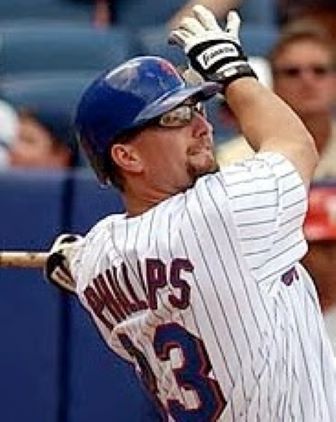
Jason Phillips – The Masked Avenger
The Mets took Phillips in the 24th round of the 1997 MLB Draft out of San Diego State. He played the first four seasons of his seven-year career as a Met either backing up Mike Piazza behind the dish, or sometimes filling in at first base to get his potent bat into the line-up. Phillips was a good hitter slashing .262/.337/.389 in 894 plate appearances for the Mets with 85 runs, 207 hits, 44 2B, 19 HRs and 95 RBIs. A good fielding backstop with a fairly weak arm, Phillips excelled with a .993 fielding percentage but struggled with opposing baserunners, throwing out only 21% of base stealers.
Although his contributions are not eye-popping he was a homegrown, quality role player and was well-liked by the fanbase. We especially loved the way he could rock a pair of sports goggles. One obstacle he faced was losing playing time to some other very good catchers the Mets had at the time like Todd Pratt and Vance Wilson. His most important contribution as a Met was one that cannot be measured with statistics. He was a very important player when they were trying to figure out how to best utilize an aging Mike Piazza.
Vance Wilson
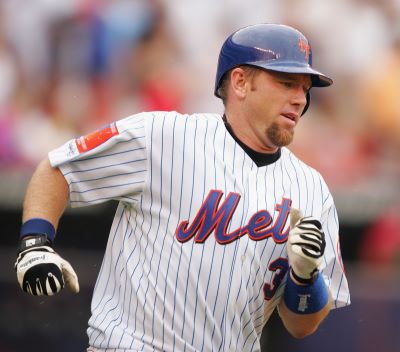
Vance Wilson – Total Package
Now before we continue I want to ask you something. These days the MLB Draft is like 20 rounds or something like that, the exact number of rounds doesn’t matter for what I am about to state. When Vance Wilson was drafted in 1993, the MLB Draft was 45 ROUNDS long. Can you imagine? Well, what do you think about Mike Piazza being drafted in the 62nd round of the 1988 MLB Draft? But I digress… I’m sure you won’t be shocked now when I tell you that Wilson was drafted in the 44th round. That tells something about his perseverance and drive as the odds are not very good for a 44th-round draft pick to ever even sniff the big leagues.
At this point, to get a good look at his career trajectory we need to do some math. He was drafted at age 20 and then spent the next eight seasons in the minors. So when the Mets brought him up for the 2001 season he was already 28 years old. But for the next four seasons, he was a very solid contributor providing backup for Mike Piazza. In 713 plate appearances for the Mets Wilson slashed .254/.308/.354 with 68 Runs, 165 Hits, 29 2Bs, 2 3Bs, 17 HRs and 92 RBIs. Wilson showed true leadership on the field and was an excellent defender. His career fielding percentage was .990 and he tossed out a staggering 40% of base stealers. In 2005 the Mets shipped Wilson to Detroit for weak-hitting infielder Anderson Hernandez .
Ramon Castro
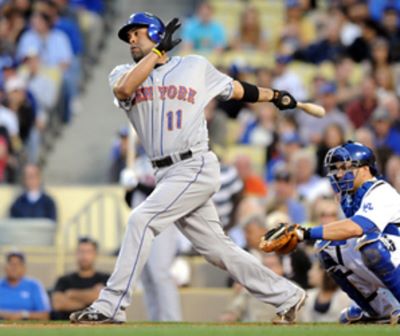
Marlin’s loss, Mets gain.
Ramon Castro was a beloved Mets player to be sure. It was hard to watch his style of play and not smile and as a fan, you loved what he brought to the field. The best part for me is that he was originally drafted by the Astros in 1997 in the 1st round (17th overall) before being traded to the Marlins the next year. The Marlins brought him up as an all-field, no-hit rookie catcher for the 1999 season and he served in that capacity for the next five seasons. But his hitting for the Fish was awful with him posting a .212/.296/.365 slash line and after a dreadful 2004 where he batted only .135, he was granted free agency after the season.
Enter the Mets who signed him as a free-agent for the 2005 season. In his five seasons with New York he was a consummate back-up catcher and his slash line didn’t in any way resemble what it had for the Marlins. His Mets slash reads .252/.321/.452. Over 785 plate appearances, he scored 83 runs with 177 hits, 41 2Bs, 33 HRs and 121 RBIs. Defensively Castro had a .990 fielding percentage while throwing out 30% of attempted steals.
By the 2009 season, he had fallen to third on the Mets catching depth chart and when a need for bullpen help arose in May, Castro was shipped to the White Sox in the ill-fated Lance Broadway deal. He played the last three seasons of his 13-year career with Chicago before retiring after the 2011 season.
Honorable Mention
J.C. Martin
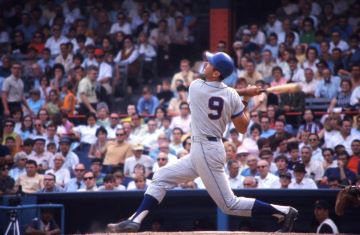
J.C. Martin – Off the bench and into World Series History.
J.C. Martin from Ridgeway, Virginia became a major league baseball player for the Chicago White Sox in 1959. Those were the days when major league scouting had no rules, no regulations and no structure to work within. They would look for players wherever they might be found. And if a young player like Martin is signed by the White Sox he was enslaved to them, with no prospects of a draft (which wouldn’t begin until 1965), free agency (a decade after the draft began), or even arbitration (a couple more decades still). So Martin played for the Sox organization from high school until past his 30th birthday. He had spent nearly a decade in the majors with Chicago and was 31 when he joined the Mets before the 1968 season. It was the culmination of a trade made during July of the ’67 season when the Mets sent Ken Boyer to the Chisox for a player-to-be-named who turned into Martin.
He would be a backup catcher in New York for two seasons until the Mets traded him back to Chicago (the Cubbies this time) just before the start of the 1970 season, for a catcher named Randy Bobb. Martin remained a Cub for the final three years of his 14-year major league career.
But it was during his two-year tenure with the Amazins that he appeared in his only World Series in 1969. And that’s where the magic happened. It was the 10th inning of Game 4 and the score was tied 1-1. With runners on first and second for the Mets and slugger Tommie Agee on deck, manager Gil Hodges sent J.C. Martin up to bat for the pitcher with instructions to bunt the runners over. Martin, who later cried, “Nobody wants to bunt in the World Series!” did his duty and laid down a sacrifice bunt which was quickly fielded by pitcher Pete Richert.
Richert pounced on the ball, whirled and fired to first. But Martin was running inside the baseline and the ball hit him in the back and deflected into shallow right field enabling pinch-runner Rod Gaspar to score from second with the winning run. If it happened today, the play would have been reviewed and the runner called out, but it was 1969. We went to the moon in 1969.















